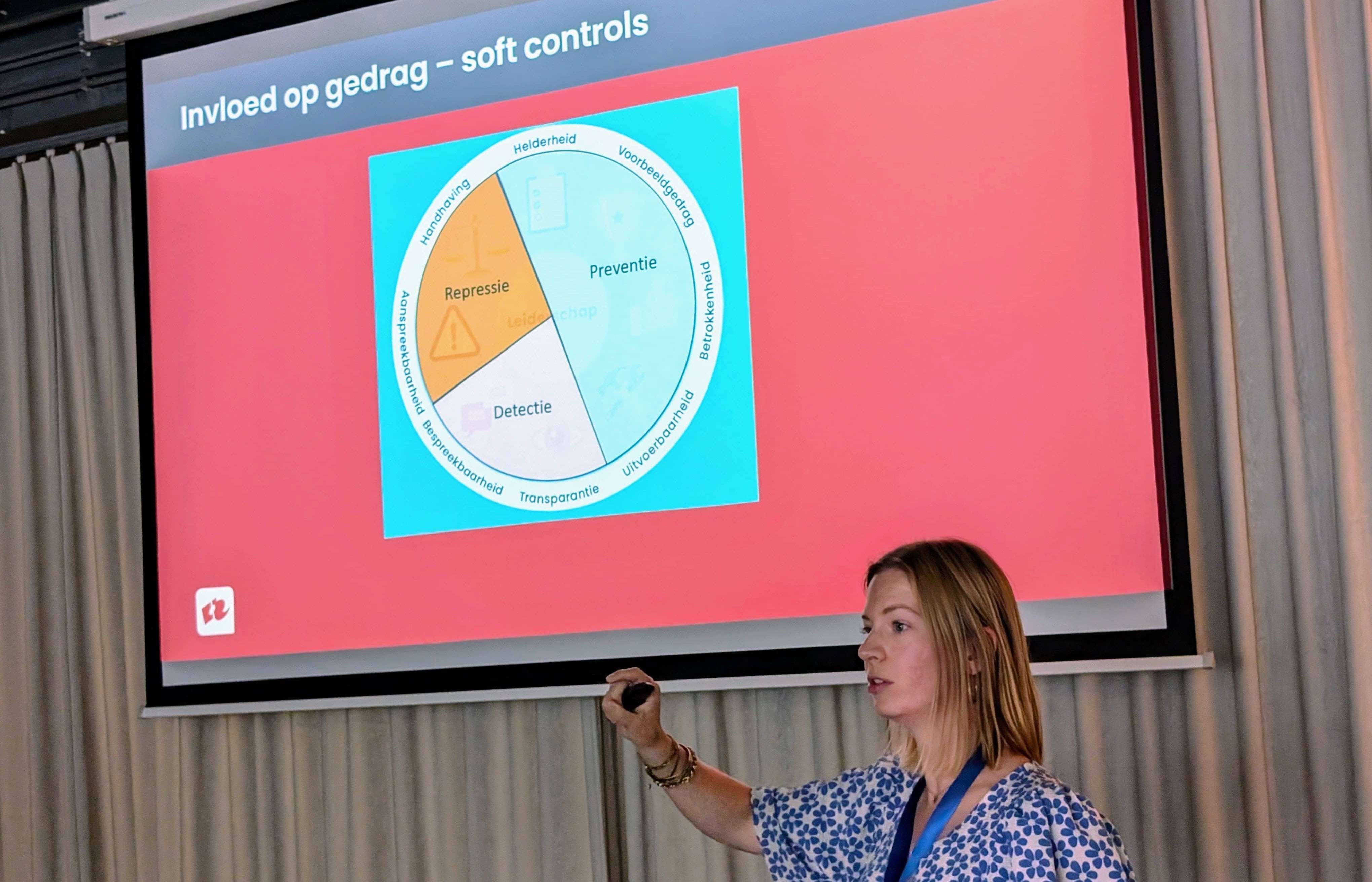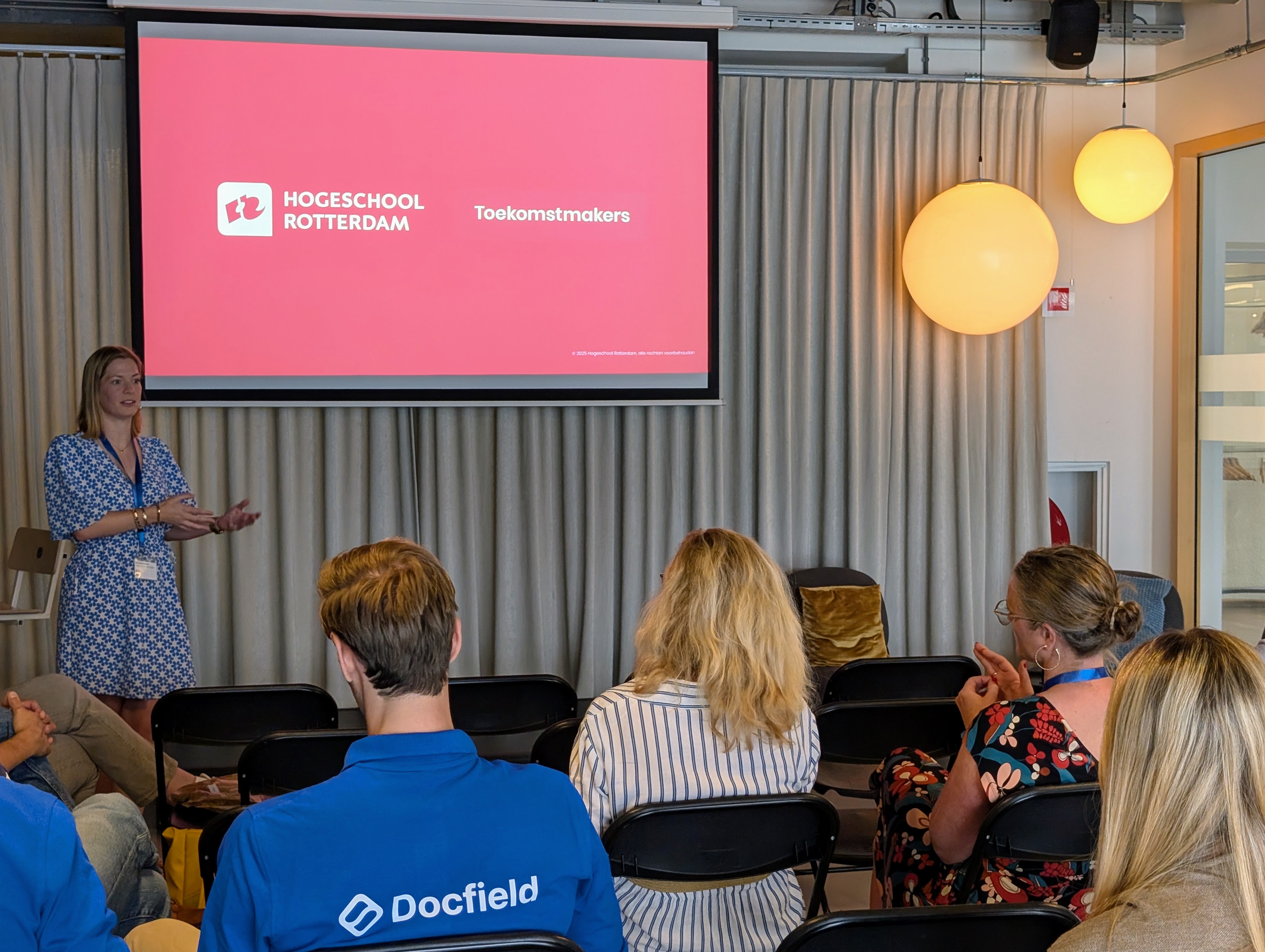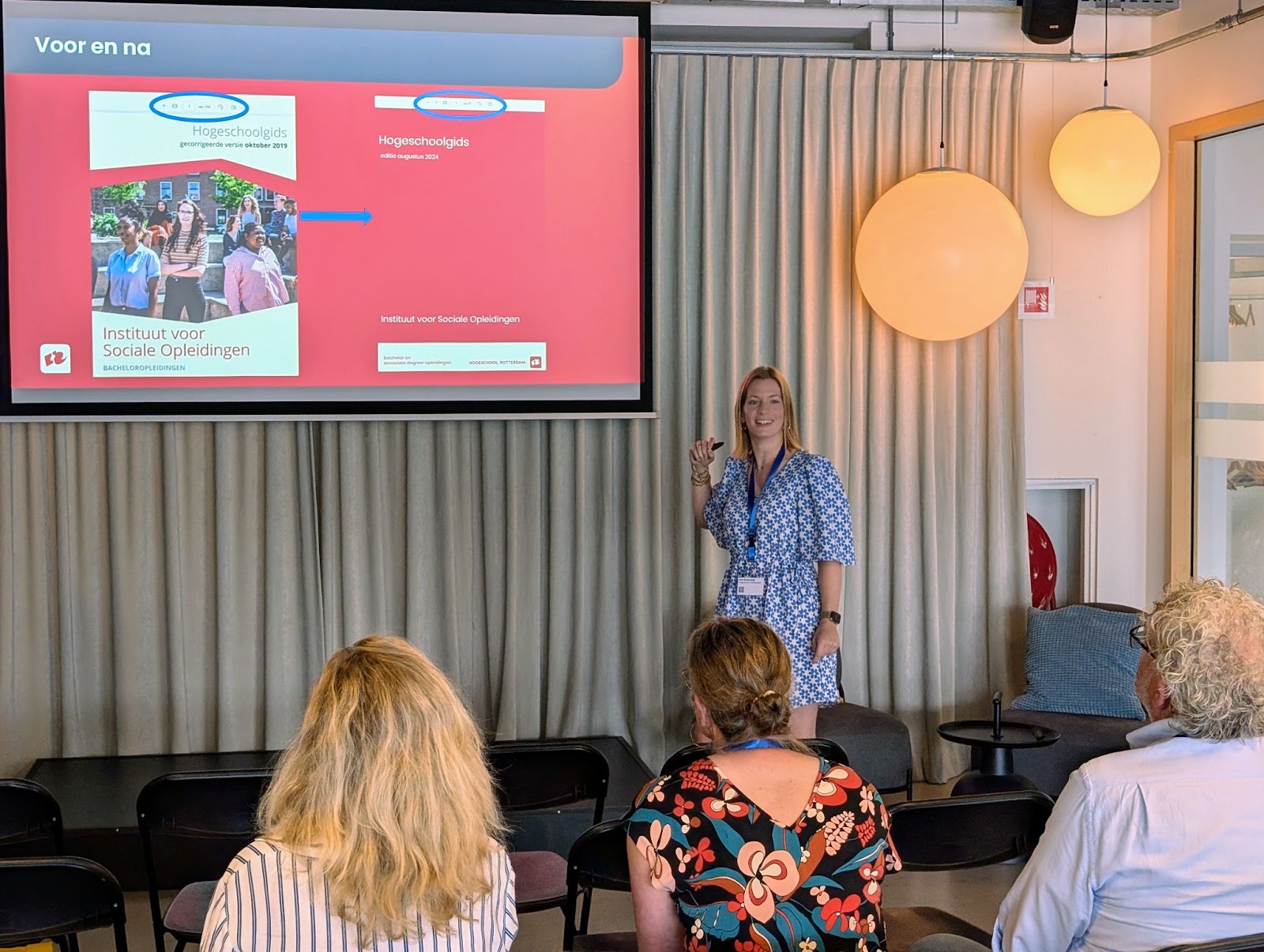
From Legal Review to Behavioural Change at Rotterdam University of Applied Sciences
July 2025 – With smart templates and soft control, Rotterdam University of Applied Sciences is ensuring legally sound OERs while influencing institutional behaviour for the better.
The student charter is a critical document within higher education. It sets out agreements, rights and responsibilities for students and serves as a formal reference point in procedures, appeals and accreditation. A key component of the charter is the Education and Examination Regulations (EER), known in the Netherlands as the OER. This is a legally required document that applies centrally across the institution. At the same time, the charter allows room for programme-specific details, such as practical procedures, institutional decisions and policy implementation. Despite its importance, many institutions face challenges in producing these charters. They are often too long, fragmented or published too late, and there is frequently a lack of control over legal consistency. Common questions arise, such as what must be included, what should be excluded, and how to maintain coherence without starting from scratch each year. Rotterdam University of Applied Sciences has taken a different approach. Under the guidance of senior legal advisor Lisa Markesteijn, the university demonstrates how smart templates and soft control lead not only to better documentation, but also to lasting improvements in institutional practices. During Docfield’s customer day, Lisa shared how she uses Docfield to structure the process and positively shape behaviour.
1. Not everything belongs in the OER
Many institutions want to support students by offering extensive explanations in the OER. While well intentioned, this approach carries legal risks. Lisa Markesteijn emphasises that the OER should be legally accurate, not overly explanatory. “What does this mean for the student?” she says. “That should be explained in the digital learning environment or through student guidance, not in the legal document.” Keeping legal content separate from interpretation helps ensure the OER remains clear, verifiable and compliant. One example is the policy on study advice. Legally, the regulation is sound, but institutions often want to add exceptions or background, such as how it applies to students who started during the pandemic. According to Lisa, that kind of explanation should be provided elsewhere. Setting this boundary leads to noticeable improvements. The documents become shorter, more consistent and easier to review. When colleagues struggle to rephrase something, Lisa offers direct support. “Just send it over. I’ll write how I would phrase it.” This improves the text and raises awareness about the purpose and scope of legal documents.
2. Systems shape behaviour, and behaviour shapes systems
Docfield provides input fields, dropdown menus and configurable templates. These built-in structures encourage consistency. When institutions misuse open fields to insert large, unnecessary text blocks, the available space is reduced the following year. This may sound strict, but it works.
“The system shapes behaviour, and behaviour shapes the system in return. That’s what soft control looks like in practice.”
The outcome is greater consistency, fewer revisions and less legal clean-up. This form of soft control may be subtle, but it is highly effective. Institutions gradually begin to write within the right parameters and align their approach with legal and procedural standards.

3. Preventie boven correctie
Lisa doesn’t wait until documents are rejected on legal grounds. Instead, she offers support early in the process, rewrites sections on request and encourages institutions to call if they have doubts. “I’d rather help at the start than have to say: this cannot be approved anymore.” This approach lowers the threshold for legal review and helps avoid frustration. Legal checks become a collaborative process, not a barrier. Institutions work in different ways. Some centralise control, others distribute responsibility across teams. Lisa adapts her approach accordingly. She mediates, guides and sometimes even writes parts of the text herself. That flexibility builds trust — and the result is higher quality across the board.

Results
• Fewer errors
• Shorter, clearer documents
• Higher satisfaction among both colleagues and students
• One student charter was reduced from 174 to 97 pages
Smart automation is more than just a tool — it acts as a mechanism for behavioural change. Legal review is no longer a bottleneck but a widely supported form of quality assurance.
“Stay critical, keep collaborating and make the work easier and more meaningful for colleagues and students alike.”
Curious how Rotterdam University of Applied Sciences applies this in practice? Read Lisa Markesteijn’s full presentation: Download de PDF 📄. We regularly share practical examples, insights and templates. Feel free to reach out or sign up for our next session.


.jpg)
